Roof Inspection Services
Exploring roof inspections goes beyond quick looks - it's a key part of keeping your home safe and protecting your time and money from future issues. Understanding what goes into these services, from the tools experts use to their methods, sets the foundation for recognizing when it's time to call in a professional. You'll learn how to spot signs of potential issues, choose the right service for your needs based on factors like accreditation and experience, and prepare your home for an inspection.
Additionally, we'll discuss typical discoveries made during rooftop inspections and discuss the financial aspects to assist you in planning your expenses wisely. Maintaining consistent check-ups on your roof not only extends its life but also prevents expensive fixes in the future.
Find A Roofer
Fill out the form below and someone will get back to you as soon as possible
Understanding Roof Inspection Services
Your knowledge of roof inspection services is key to maintaining a sturdy, leak-free home. Think of these services as your home's annual check-up; they're essential but often overlooked until it's too late.
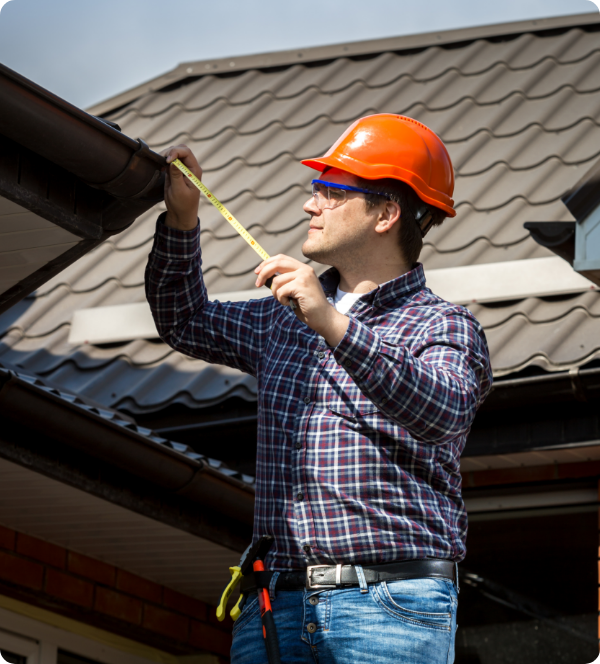
What Do Roof Inspections Entail?
A comprehensive roof inspection involves a thorough examination of both the interior and exterior components of your roofing system. For both commercial and residential properties, the inspection process typically includes checking the roof for signs of wear and tear, such as broken or missing shingles, damaged flashing, and problems with the gutters and downspouts. Inspectors also look for signs of water damage, leaks, and mold growth, which can indicate more serious hidden issues.
The key difference in the inspection process between commercial and residential roofs lies in their design and materials. Commercial roofs often have a flat or low slope and are constructed using materials like metal, modified bitumen, or single-ply membranes. This requires a unique approach to both inspection and maintenance.
Residential roofs, on the other hand, are usually steeper and made from shingles, tiles, or sometimes metal. Therefore, while the fundamentals of roof inspections remain consistent, the techniques and tools used may vary based on the roof type.
Inspectors use a range of tools, including drones, infrared cameras, and moisture scanners, to provide a detailed assessment without causing further damage to the roof. These tools are especially useful in identifying problems that are not visible to the naked eye.
The Tools of the Trade
Drones have dramatically altered the landscape of roof inspections, enabling experts to explore difficult access areas safely from the ground. Thermal images, transformative in their capacity, show hidden moisture issues through the lens of temperature disparity across roofing sections. Together, these tools provide a clearer picture (literally) of your roof’s condition.
In terms of expertise required? It goes beyond climbing ladders or flying drones—inspectors must understand roofing materials, construction methods, and common failure points enough to diagnose current issues and predict potential ones.
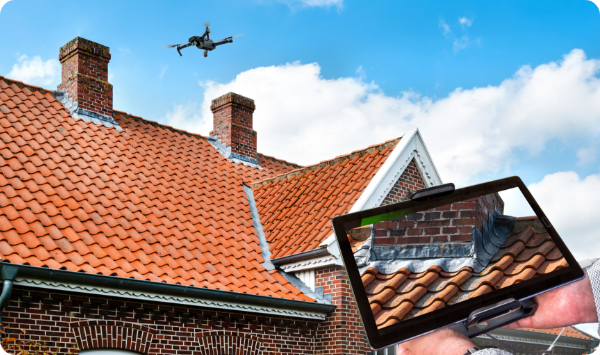
Signs You Need a Roof Inspection
Sometimes, your roof might show little signs of trouble before turning into big repair issues. Spotting these early signals
can stop the need for major fixes, saving you time and money. Understanding, when a roof inspection is needed, is crucial to extending the life of your home's roof.
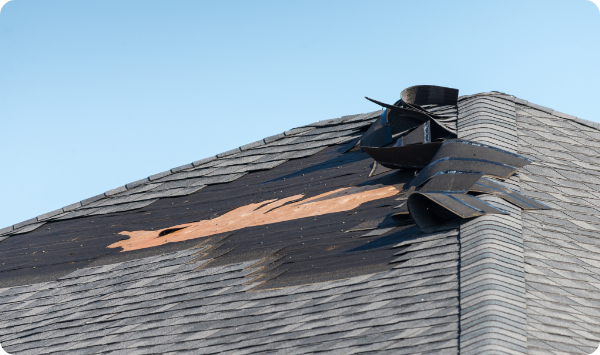
Visible Damage After Extreme Weather
If you've recently experienced severe weather, such as heavy storms or hail, it's wise to give your roof a once-over. High winds can rip shingles right off and hail can leave dents or even punctures that aren't always visible from the ground. The help of skilled pros, equipped with ladders and their knowledge, becomes invaluable at this juncture.
Aging Roof Beyond Its Prime
Similar to seasoned expertise, some things improve with time, but unfortunately, roofs aren't one of them. Most residential roofs are designed to last between 20 to 30 years depending on roofing material quality and maintenance history. If yours is pushing its limit, an inspection can tell whether it's time for repair or replacement.
This becomes especially important if you're unsure about the last time your roof was inspected or replaced.
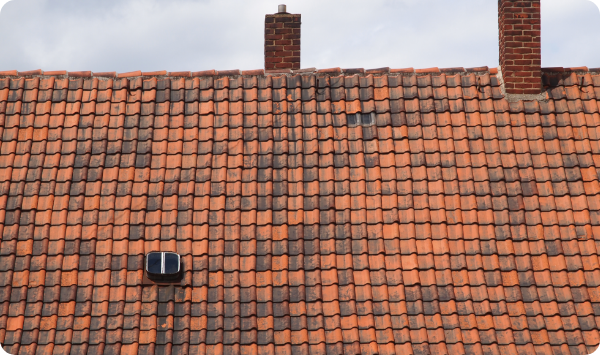
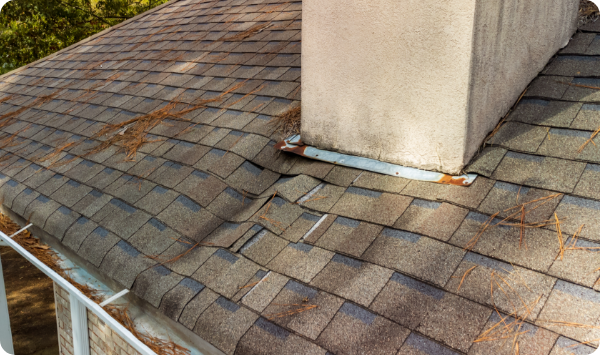
Sagging Areas or Water Damage Signs Inside Your Home
A sagging spot doesn't just indicate an issue; it also suggests an urgent situation. This hints at underlying structural problems which, if overlooked, might end in a disastrous collapse. Likewise, water stains on ceilings or walls inside your home point toward potential leaks needing immediate attention.
To avoid unexpected water leaks indoors during the next rainstorm, a professional inspection should be top of mind.
Types of Roof Inspection Services
Exploring roof inspections may feel like trying to find your way through a maze. However, understanding the different types is easier than you'd think.

Drone Inspections
The future has landed on our rooftops with drone inspections. Now, roof inspectors can utilize cutting-edge technology to observe from above, eliminating the need for risky climbs. By soaring above, drones snag crystal-clear snapshots and footage, uncovering hidden flaws that frequently escape detection from ground level or through traditional methods. It's fast, safe, and incredibly efficient for spotting potential problems before they escalate.
However, it's not just about getting up high; drones offer precision in identifying damage after events like storms or natural disasters. By covering large areas quickly, they help speed up insurance claims and necessary repairs—making them an invaluable tool in modern roofing maintenance strategies.
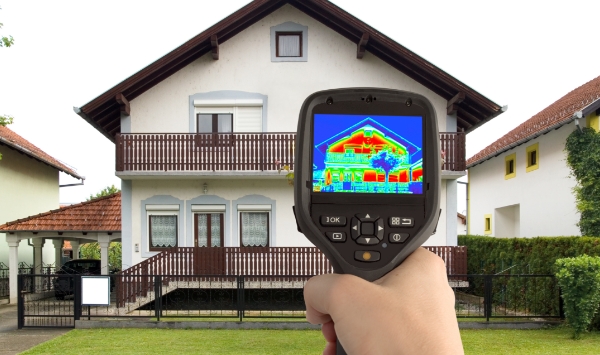
Thermal Imaging Inspections
Sometimes problems aren't visible to the naked eye—that’s where thermal imaging comes into play. Infrared imaging, by using cameras that perceive temperature disparities, unveils the unseen aspects of your roof's condition. Temperature variations spotted by thermal imaging may signal the presence of moisture, inadequate insulation, or structural damage invisible to the naked eye.
The beauty of thermal imaging lies in its non-invasive nature; there’s no need for direct contact with your roof materials which reduces risk and preserves integrity while uncovering secrets hiding beneath the surface.
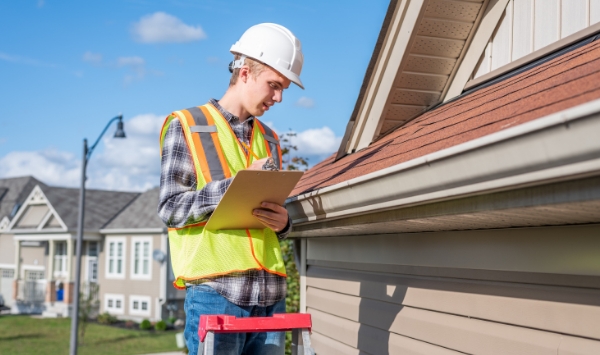
Traditional Hands-On Inspections
Last but certainly not least is the traditional inspection route—a hands-on approach that relies on expert eyes and experience over gadgets and gizmos. Professionals will examine shingles, flashing, gutters, and more for signs of wear, tear, or other damages. While this method might seem old-school compared to flying drones and infrared cameras, it remains essential for comprehensive assessment especially when physical feedback is important to diagnosis. Moreover, it instills a sense of comfort to know an experienced expert is looking at your rooftop, protecting the health and longevity of your home with their own eyes
Choosing the Right Roof Inspection Service
Choosing a high-quality roof inspection service demands a combination of expertise, attention to detail, and understanding of essential criteria, resembling the process of making informed decisions in a professional environment.
Accreditation Matters
The first step in choosing a quality roof inspection service is checking for proper accreditation. Accredited services have been vetted for their standards and practices, ensuring you're not just throwing your money into the wind. A great place to start is by looking up members of the National Roofing Contractors Association (NRCA), which sets high industry standards.
Beyond NRCA membership, look for inspectors with certifications from reputable organizations specific to roofing or building inspections. These credentials act as a seal of approval that they know their shingles from their shakes.

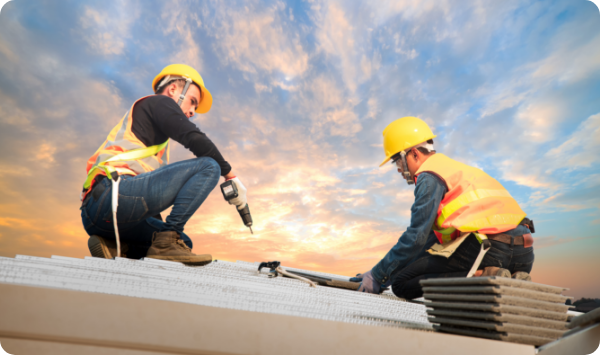
Experience Speaks Volumes
An experienced roof inspector can spot issues that others might miss. Ask potential inspectors about their years in business and the types of roofs they've inspected most frequently. This insight gives you confidence in their ability to handle your unique situation.
Digging deeper, request case studies or examples where they’ve identified complex problems and provided actionable solutions. Hearing about their victories in the field reassures you that you made the right choice.
Poring Over Customer Reviews
In today’s digital age, customer reviews are gold dust when selecting any service provider—roof inspections included. Platforms like Yelp or Google My Business give insights into past customers' experiences. The Better Business Bureau's website is another resource worth exploring for feedback on professionalism and outcomes by various companies.
Note patterns within these reviews: Are there repeated mentions of thoroughness? Timeliness? Or perhaps communication skills? These details paint a clearer picture than what's typically seen in promotional material.

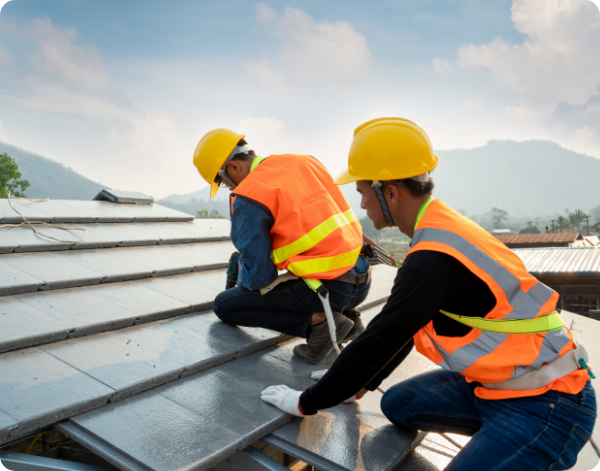
Preparing for a Roof Inspection
Getting your roof ready for an inspection doesn't have to be a headache. However, it does need some attention to detail. Here's how you can smooth the path for the professionals and ensure nothing gets overlooked.
-
Clean Your Gutters
An obstructed gutter, more than just a headache in torrential downpours, complicates the task for those examining water movement and obstructions that might compromise your roof's integrity. So, grab those gloves and make sure they're clean before inspection day rolls around.
If you're not up for the task, consider hiring a professional cleaning service. This move might seem like an extra step but think of it this way: clear gutters give inspectors unobstructed access, making their job faster and more efficient. -
Trim Surrounding Trees
Trees add beauty to your property but can be problematic when branches hang over your roof. They not only pose risks of storm damage but can obstruct a thorough inspection. Trim any limbs close enough to touch or hover above your rooftop.
Taking preemptive steps might help mitigate hazards and grant inspectors unobstructed views, enabling the detection of potential problems that could remain concealed -
Ensure Easy Access
Make sure there’s easy access all around your home—especially if parts of the roof are hard to reach without moving obstacles out of the way first. Move vehicles out of driveways or garages where ladders may need placement, unlock gates leading into backyard areas with attic vents or chimneys needing closer looks—all these small steps contribute greatly towards facilitating a seamless inspection process.
Common Findings During Roof Inspections
One of the most common findings during roof inspections is the natural wear and tear that occurs over time. Exposure to sunlight, wind, rain, and other environmental elements gradually degrades roofing materials.
This can lead to fading, cracking, and the breakdown of shingles or tiles, ultimately affecting the roof's ability to protect the home from the elements. Regular inspection helps identify these issues early, allowing for repairs or replacements to be made before significant damage occurs.
Additionally, inspectors often find areas where water has begun to pool on flat roofs, or where debris has accumulated, both of which can lead to leaks and other water-related damage if not addressed.
The Cost of Roof Inspection Services
The cost of roof inspection services can vary widely depending on several factors, including the size and type of your roof, the location of your property, and the complexity of the inspection needed. On average, homeowners can expect to pay between $100 and $500 for a professional roof inspection.
However, more intricate inspections involving drones or thermal imaging might command higher fees, potentially reaching up to $1,000 for large or particularly complex roofs. It's also worth noting that some inspectors may offer a bundled price if you decide to proceed with repairs or maintenance services they recommend following the inspection.
Ultimately, investing in a thorough roof inspection can save money in the long run by identifying minor issues before they escalate into costly repairs.
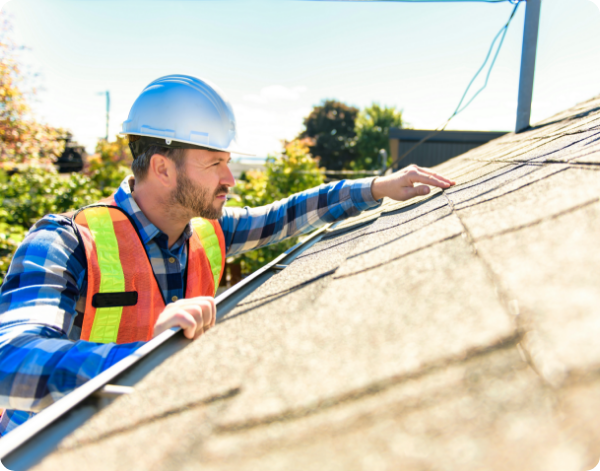
Factors That Influence the Cost of a Roof Inspection
Several factors play a crucial role in determining the cost of a roof inspection. One primary factor is the size of the roof; a larger roof requires more time and effort to thoroughly inspect, naturally leading to higher fees. The type of roof also affects pricing, as certain materials or designs may require specialized knowledge or equipment for proper evaluation.
Location is another significant variable; properties located in regions with high living costs or hard-to-reach areas might see increased inspection costs. The need for specialized inspections—such as those involving drones or thermal imaging technologies—can also add to the expense, given the advanced equipment and expertise required.
Lastly, the current condition of the roof may influence the cost. A roof that has been neglected or shows signs of significant damage might necessitate a more in-depth inspection to accurately assess its condition and identify necessary repairs, thus increasing the overall cost of the service.
Benefits of Regular Roof Inspections
Regular roof inspections are essential for maintaining the safety, functionality, and aesthetics of your home. They serve as a proactive measure that can save homeowners significant time and money by identifying minor issues before they become major problems.
Early Detection of Potential Issues
Regular roof inspections are crucial for the early detection of potential problems that could escalate into significant damage if left unaddressed. Through these evaluations, professionals can identify minor issues such as small leaks, missing shingles, or wear and tear before they lead to more serious problems like water damage, mold growth, or structural weaknesses.
Extending Roof Lifespan
Another significant benefit of routine roof inspections is the potential to extend the lifespan of your roof. By identifying and fixing minor damages or wear before they develop into larger issues, you maintain the overall integrity of your roof. Regular upkeep, facilitated by these inspections, makes certain that roofing materials function effectively for as long as possible, delaying the need for a full roof replacement and maximizing your investment.
Improved Energy Efficiency
Roof inspections can also contribute to improved energy efficiency within the home. Inspectors can identify areas of inadequate insulation or ventilation issues that can lead to higher heating or cooling costs. Correcting these issues not only helps maintain a comfortable indoor climate but also reduces the energy consumption of heating and cooling systems, leading to lower utility bills.
Enhanced Safety
Safety is a paramount concern that regular roof inspections address. Compromised roof structures, if left unnoticed, can pose significant risks to inhabitants. Inspections ensure that structural integrity issues are identified and rectified promptly, reducing the risk of collapses or other dangerous scenarios.
By minimizing the chances of water intrusion, regular inspections help prevent the growth of mold and mildew, which can have serious health implications for residents.
Insurance and Warranty Advantages
Lastly, regular roof inspections can have positive implications for homeowners’ insurance and warranties. Many insurance policies require or highly recommend routine inspections and maintenance to keep coverage valid.
Additionally, warranties offered by roofing manufacturers often stipulate regular inspections as a condition of the warranty. Compliance with these requirements ensures you remain covered, providing peace of mind and financial protection against unexpected roofing issues.
FAQs about Roof Inspection Services
-
How much does a roof inspection cost in US?
The cost of a roof inspection in the US typically ranges from $150 to $500.
-
How long does a roof last?
The lifespan of a roof varies depending on factors like material, climate, and maintenance, but asphalt shingle roofs typically last 20-30 years.
-
How much does it cost to repair a roof in the US?
Roof repair costs in the US can range from $300 to $1,500, with the average cost being around $750.
Get started today!
It only takes a few moments to find your roofer.
Find A Roofer
Fill out the form below and someone will get back to you as soon as possible